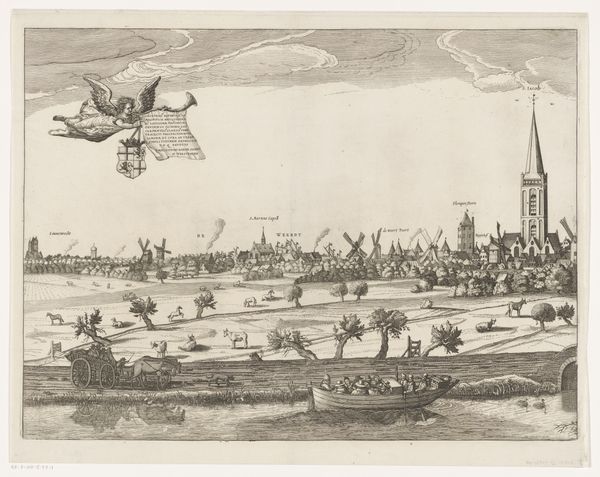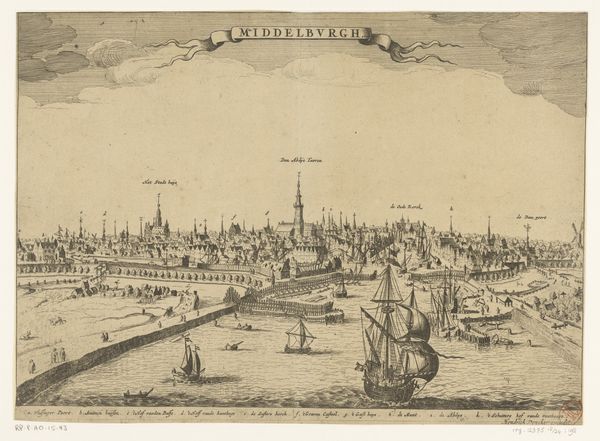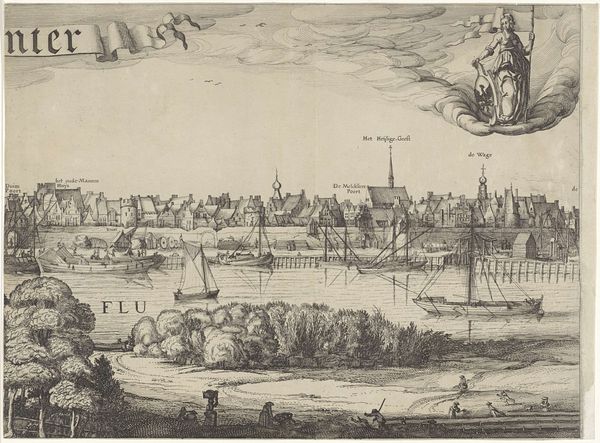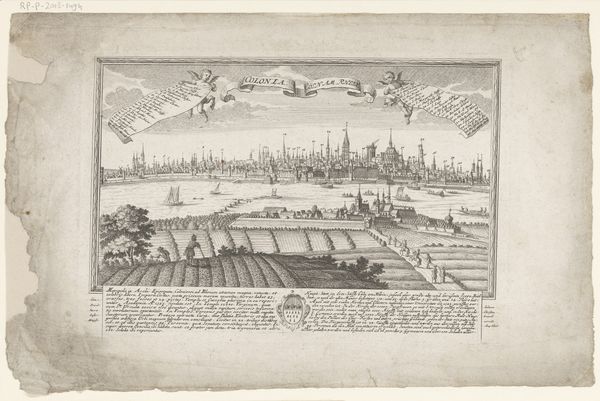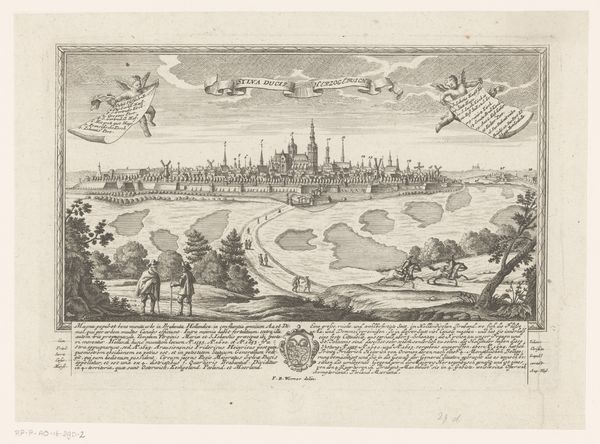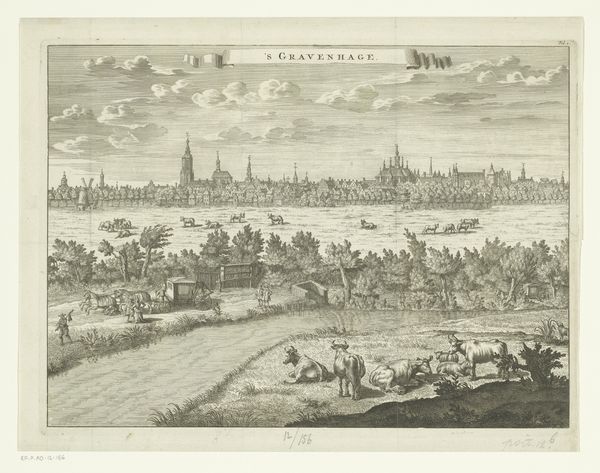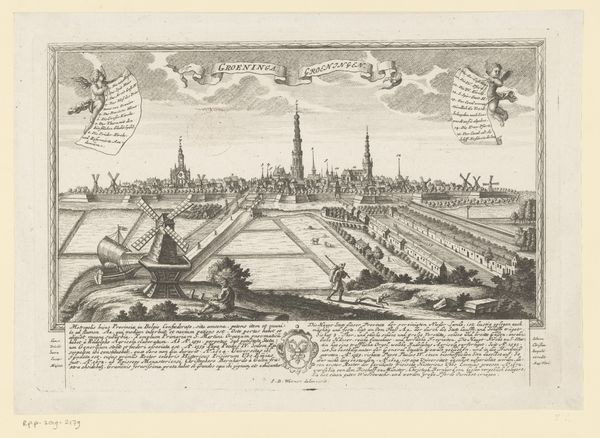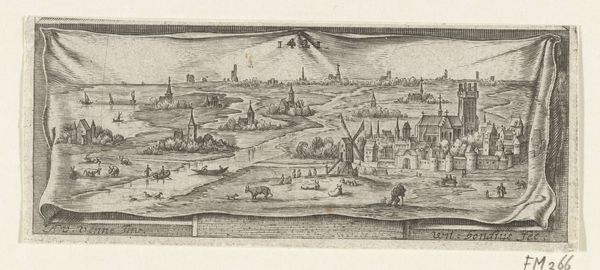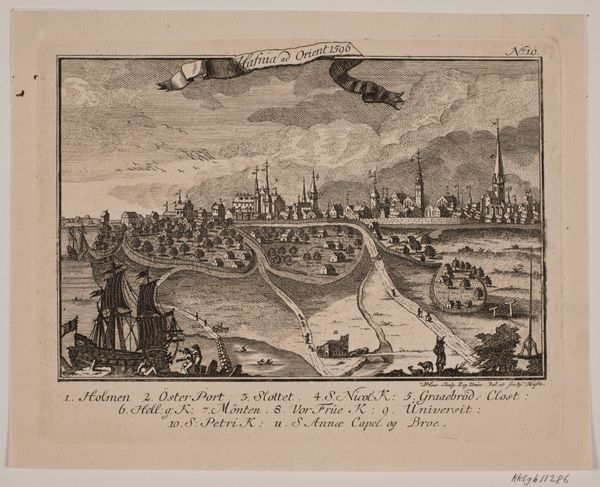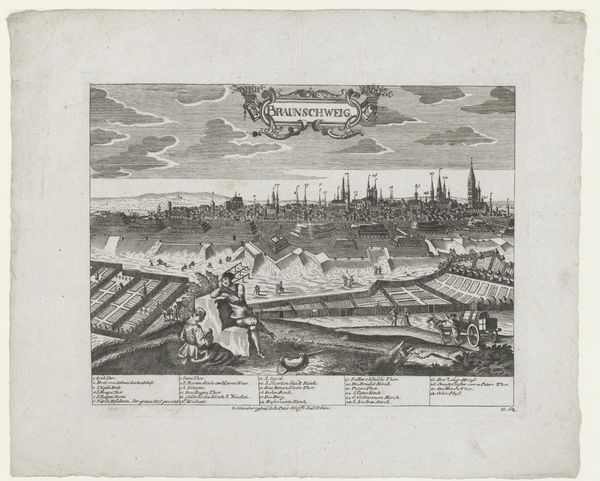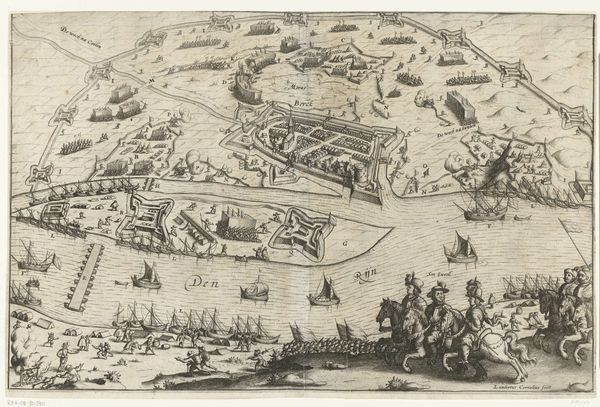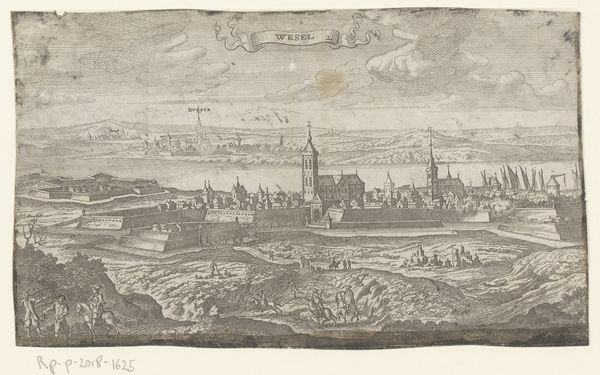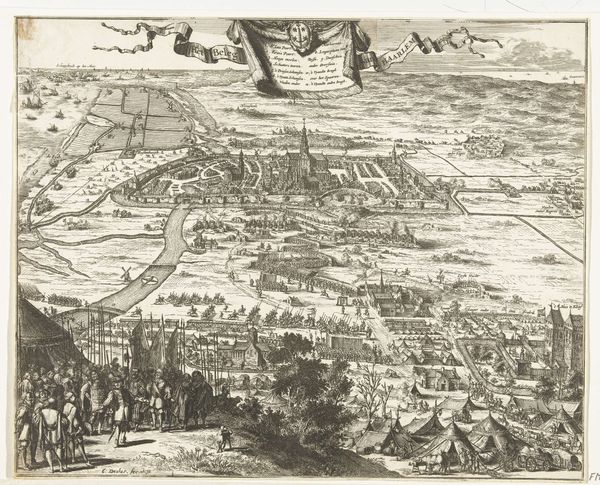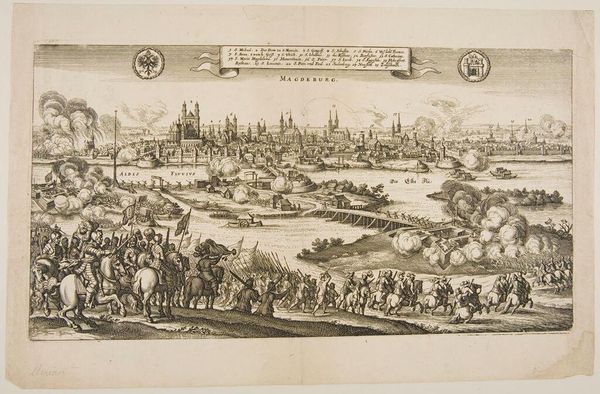
print, engraving
#
dutch-golden-age
# print
#
pen sketch
#
old engraving style
#
landscape
#
figuration
#
line
#
cityscape
#
engraving
#
realism
Dimensions: height 404 mm, width 537 mm
Copyright: Rijks Museum: Open Domain
Curator: Jan Hendriksz. Verstraelen's "Cityscape of Utrecht" from the Dutch Golden Age. It's currently housed right here in the Rijksmuseum. What are your first thoughts? Editor: I'm immediately struck by the contrast. It feels grounded and dreamlike. The intricate etching suggests a meticulous process, yet there's a surreal quality with the figure in the sky holding that scroll. It has that tangible, laborious feel I appreciate. Curator: Exactly. The artist created this engraving sometime between 1625 and 1679, placing it firmly in a period defined by economic boom, intense global exchange, and also deeply entrenched social hierarchies that informed the subjects deemed worthy of representation. Consider who and what is centered, and conversely, omitted from the view. Editor: Yes, and the city is depicted almost like a commodity, carefully mapped and presented. But it's the foreground that I find interesting. See the rendering of the landscape, the workers in the fields and their tools—how are these figures integrated in the commercial depiction of this space? Curator: The positioning of the viewer is also significant, as if on an elevated plane, emphasizing that the engraving allows you to 'survey' and 'possess' it through sight, much like a form of cartographic or territorial capture. Consider the absence of marginalized communities. Editor: It does evoke those complicated power dynamics. This print would have circulated amongst a specific group who were consumers, participants in the social and economic prosperity. How were the resources created, and who labored? The etching beautifully displays Verstraelen's technique of using thin and precise lines. Curator: These lines aren't merely decorative; they delineate space, class, access. How does the image uphold prevailing orthodoxies or perhaps critique them? It’s not simply a 'landscape,' but a negotiation of values. Editor: Thinking about the contemporary viewers of these engravings, their relationship to the raw materials - the paper, the ink, the metal plate used in creating this - I find myself contemplating this cycle of production and consumption and where those dynamics existed and how they continue today. Curator: Yes, that relationship remains potent. Verstraelen’s city presents as both documentation and as an ideological assertion, subtly yet powerfully embedding particular perspectives. Editor: Understanding the physical production—the engraver's hand, the printing press, and the social systems propping up art—allows us to see beyond the surface image. Curator: Absolutely. We're left questioning what is privileged, what is elided, and ultimately, whose story is told and retold, reshaped across history. Editor: The act of physically making art is deeply ingrained in a specific moment and place.
Comments
No comments
Be the first to comment and join the conversation on the ultimate creative platform.
